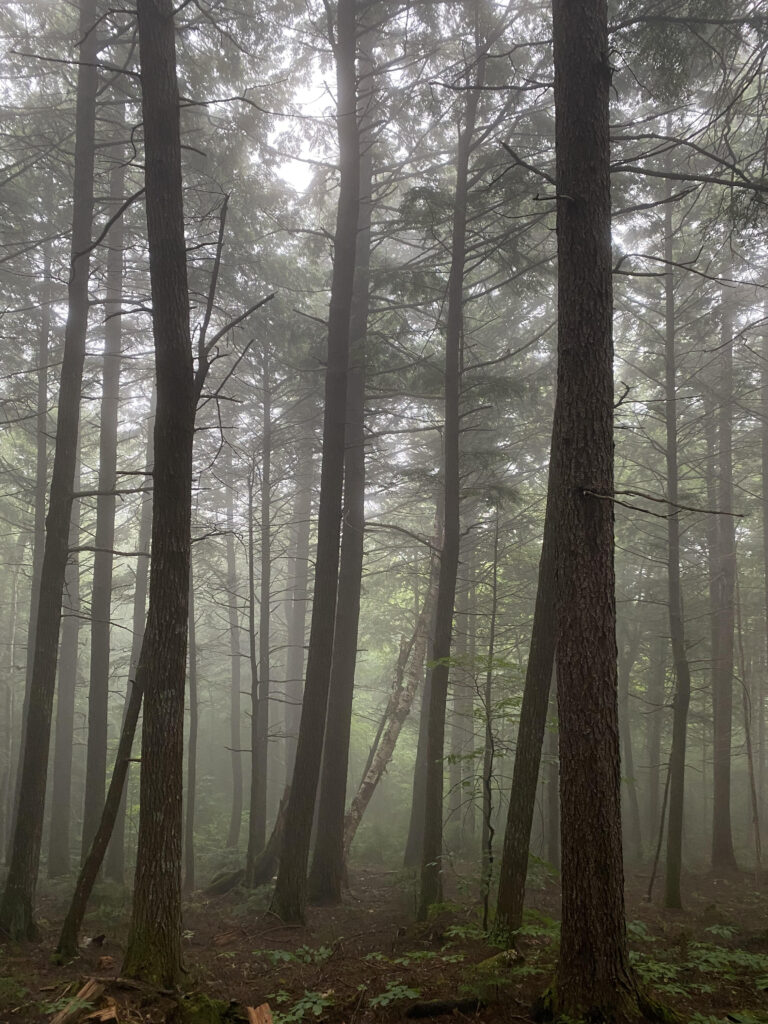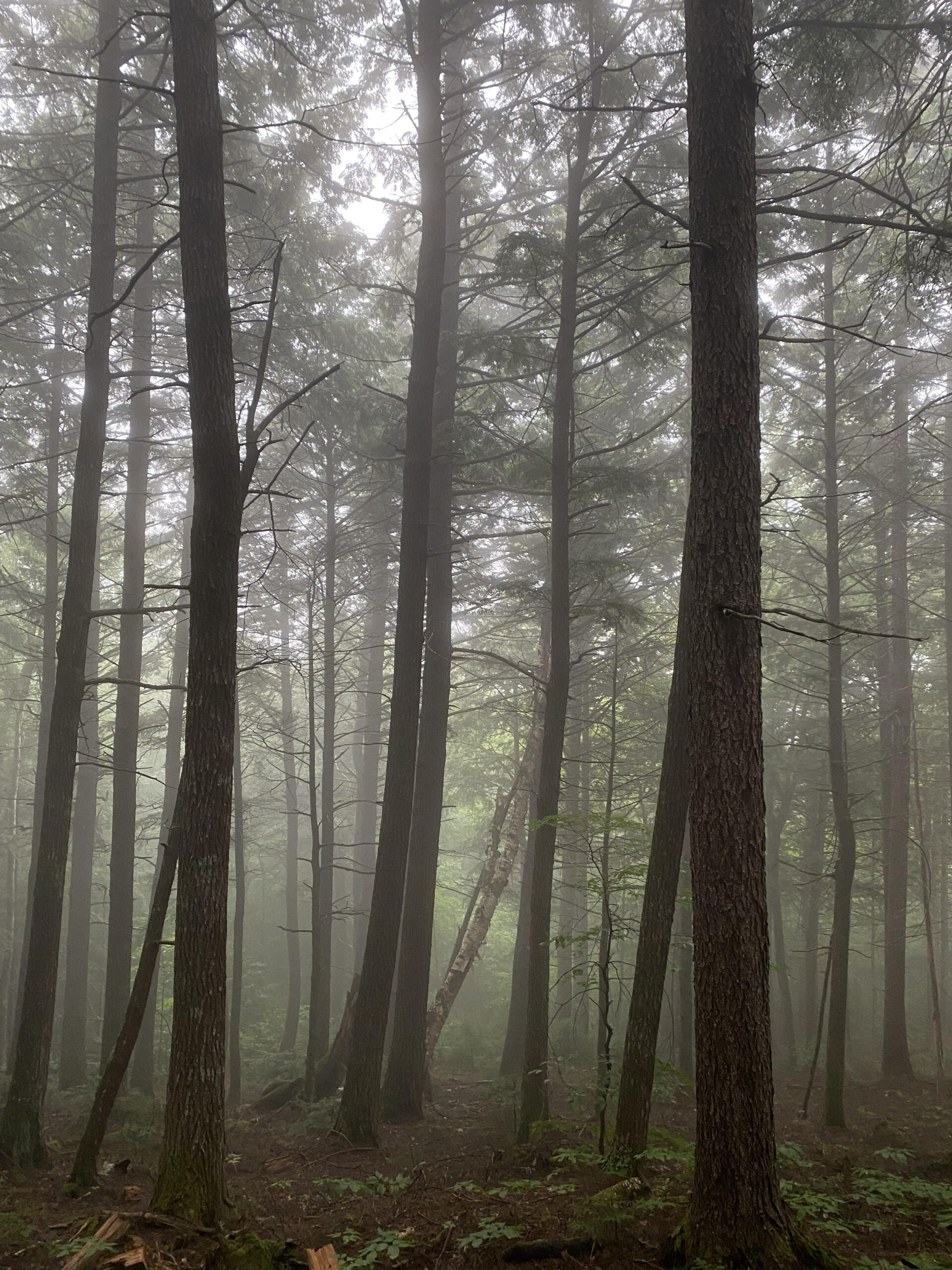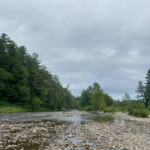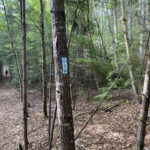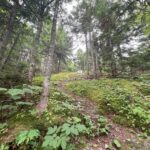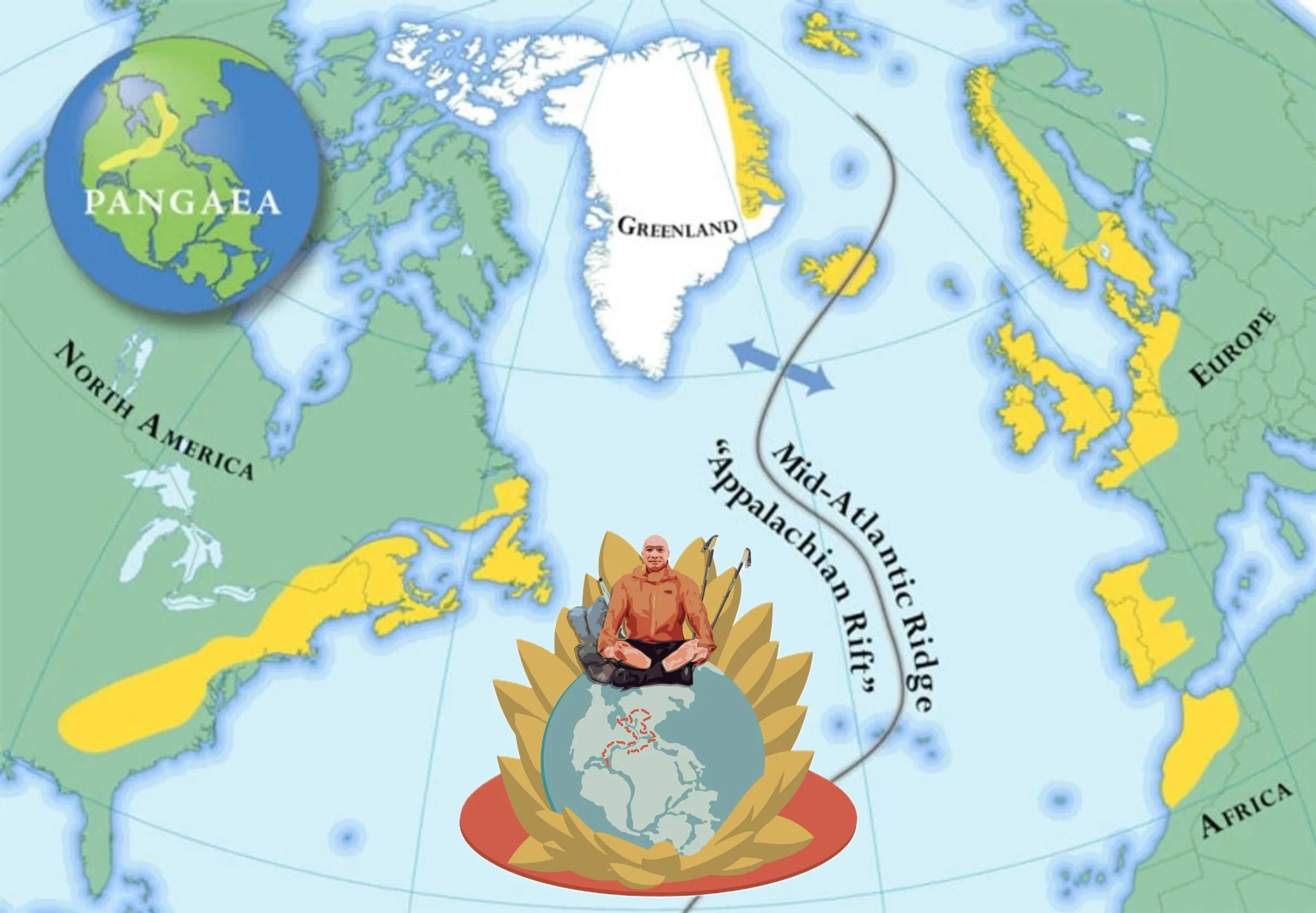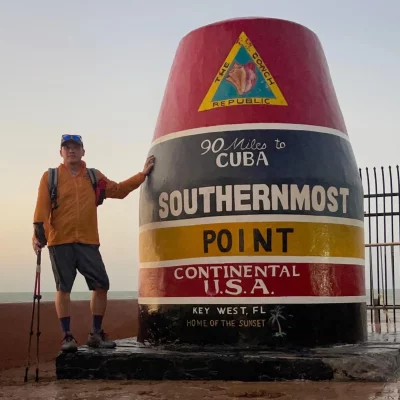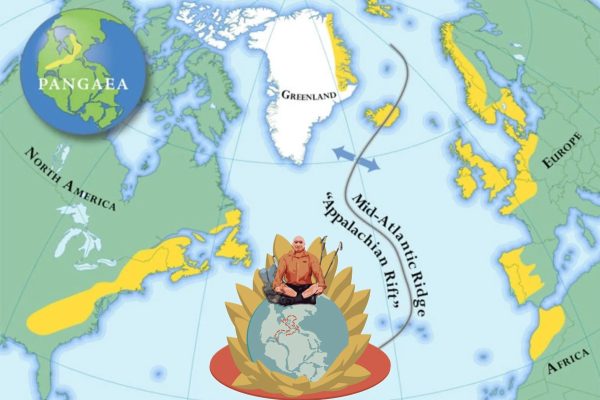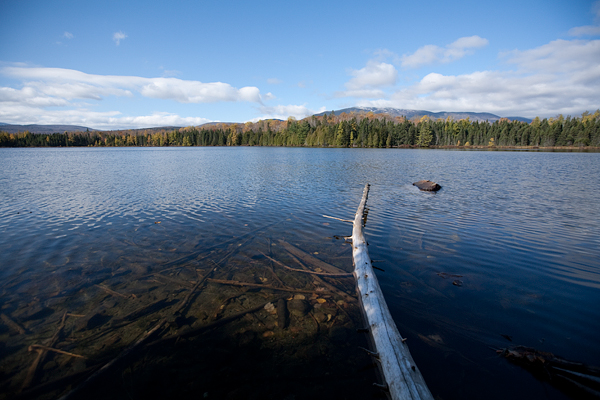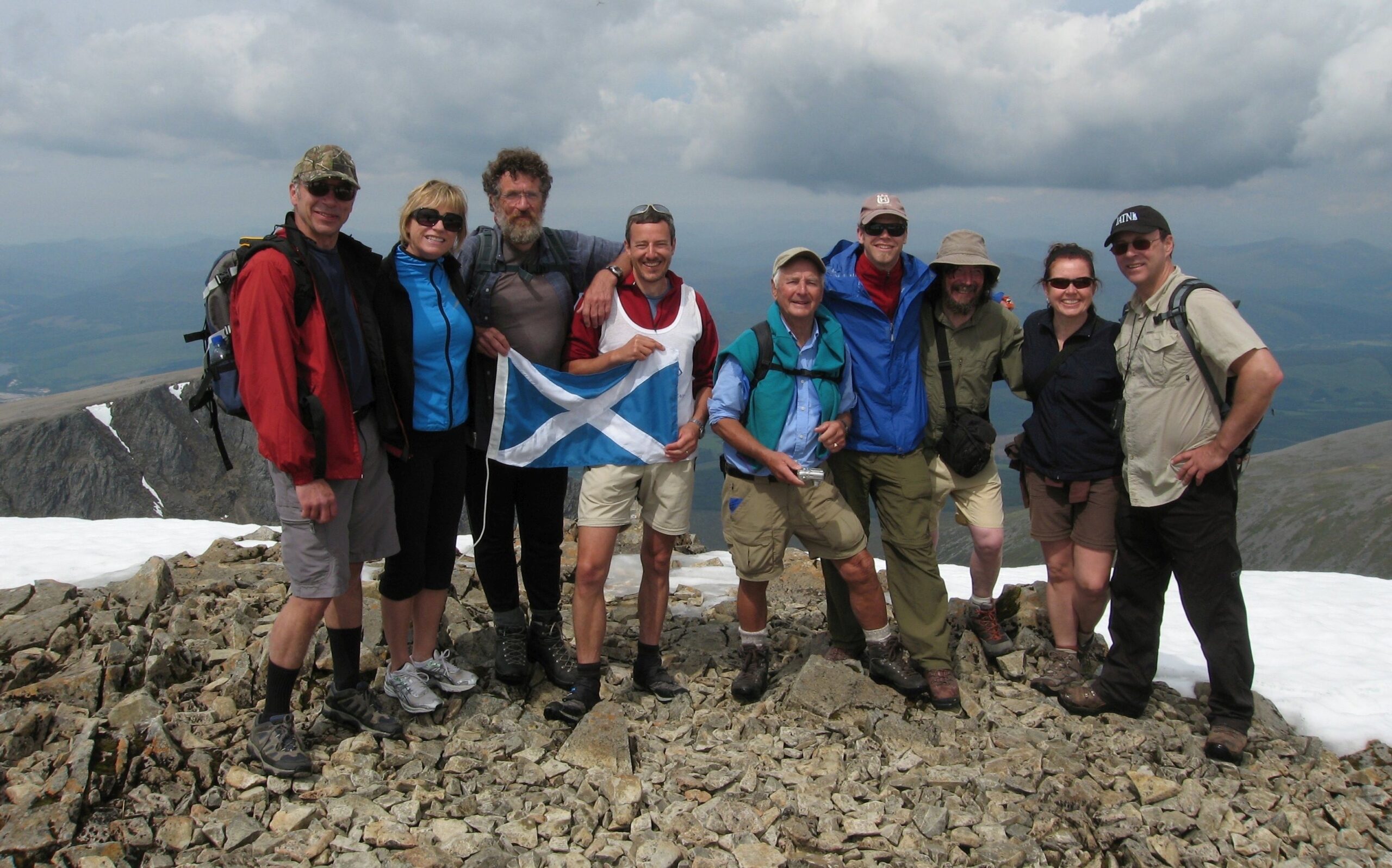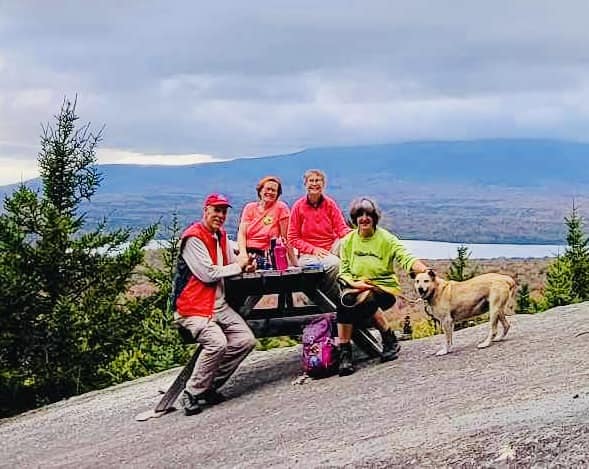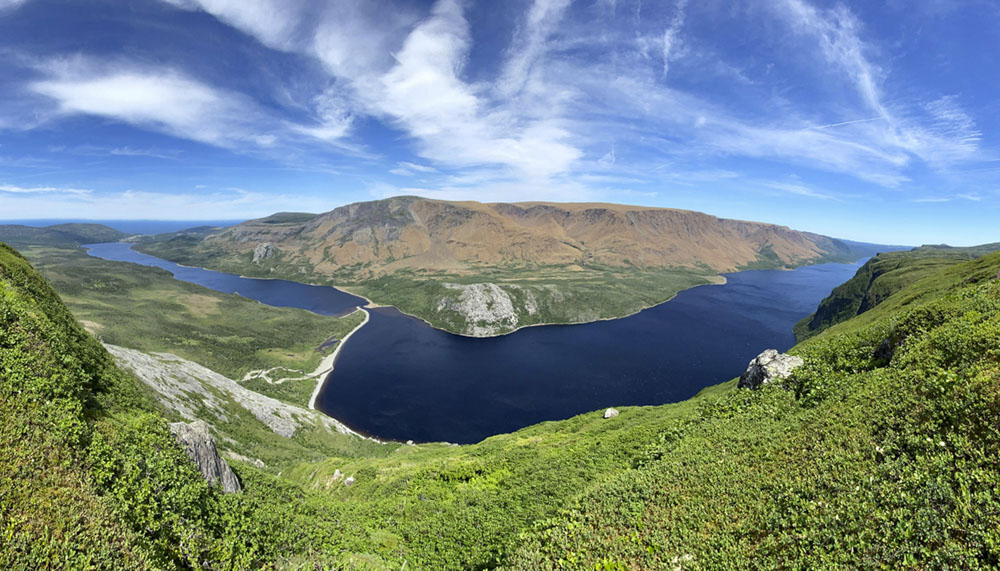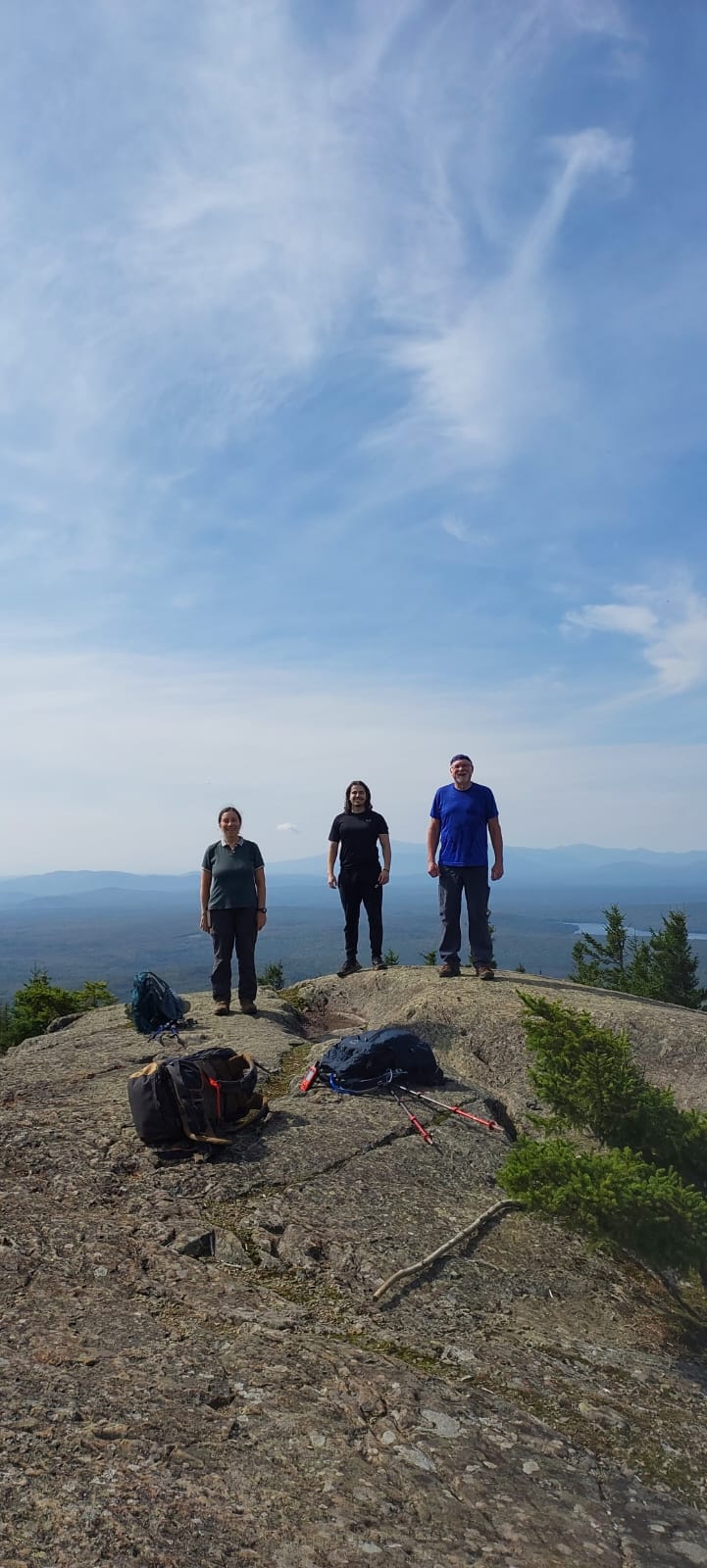Amy and I met up at the Sandbank Stream campground, where we stayed one night before heading out to the IAT trailhead. Before we got on the trail, we encountered a thru-hiker who had completed the AT and was heading northbound on the IAT.
Within the first hour or two of our hike, we turned a corner and there was a male moose about fifty yards away from us, directly in the middle of the trail. Although Amy and I stayed put and tried to wait for the moose to move safely off to the side, he seriously did not care that we were there – he just continued munching away at the plants and minding his business.
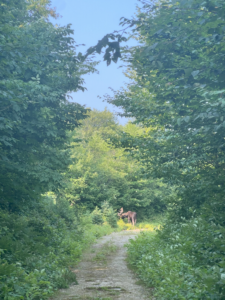
After about an hour of waiting and with no indication that the moose intended to move, Amy and I decided to turn around and reroute to our lean-to. Although the encounter was a minor annoyance, it was a neat experience to have happened upon him, and encouraging that he seemed to be in such good health. We stayed at the Wassataquoik Lean-to, which was in great condition, that night.
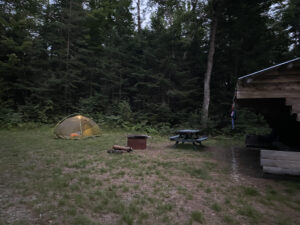
On the second day of our hike, we did the Ford River crossing. The river was running well, but luckily the water was not so high as to make the crossing tedious. I found a walking stick before we crossed to help out with balancing on the rocks, though I didn’t need to rely on it very heavily.

The opposite side of the crossing, before the ascent of Mount Deasey, was my favorite part of the IAT that I experienced – I watched a beautiful great blue heron fly along the riverbank, and I thought that all the river stones and gentle rapids were beautiful. As we began to hike away from the river, the trail became slightly marshy for a few hundred meters, with massive ferns and tall grasses, before turning further into the forest.
The trail up towards Mount Deasey was easy-going for the most part. We hiked past Earl’s Erratic, a house-sized boulder just to the side of the trail. The elevation picked up tremendously once we reached the abandoned fire warden’s cabin. Those 800 meters up to Deasey were tough, but the expansive view of Katahdin, Mount Chase, Sugarloaf Mountain, the Turner Mountains, and much of the Maine North Woods made the scramble worth it. The summit of Deasey made an ideal spot for a water and snack break.
On our way back down from Deasey, we ran into a group of National Park Service volunteers who were out to repair the fire warden’s tower at the top of the mountain, which was great news, as the tower was in need of some TLC when Amy and I saw it.
In just the first ten or so miles of the IAT, I experienced a range of what the IAT and Katahdin Woods & Waters have to offer – close-up encounters with wildlife (the moose and the great blue heron), stunning views (the Ford River and the panoramic lookout of Mount Deasey), relaxed trail-walks, and challenging scrambles.
